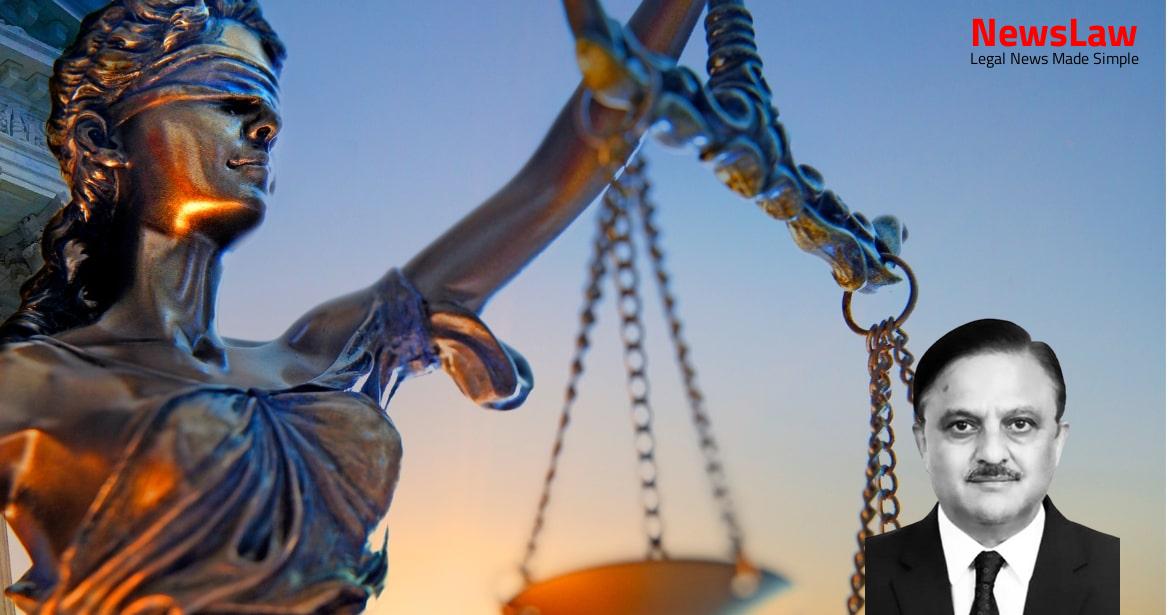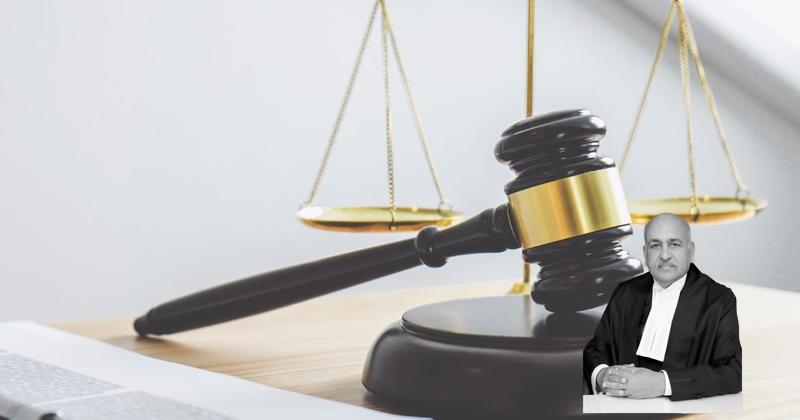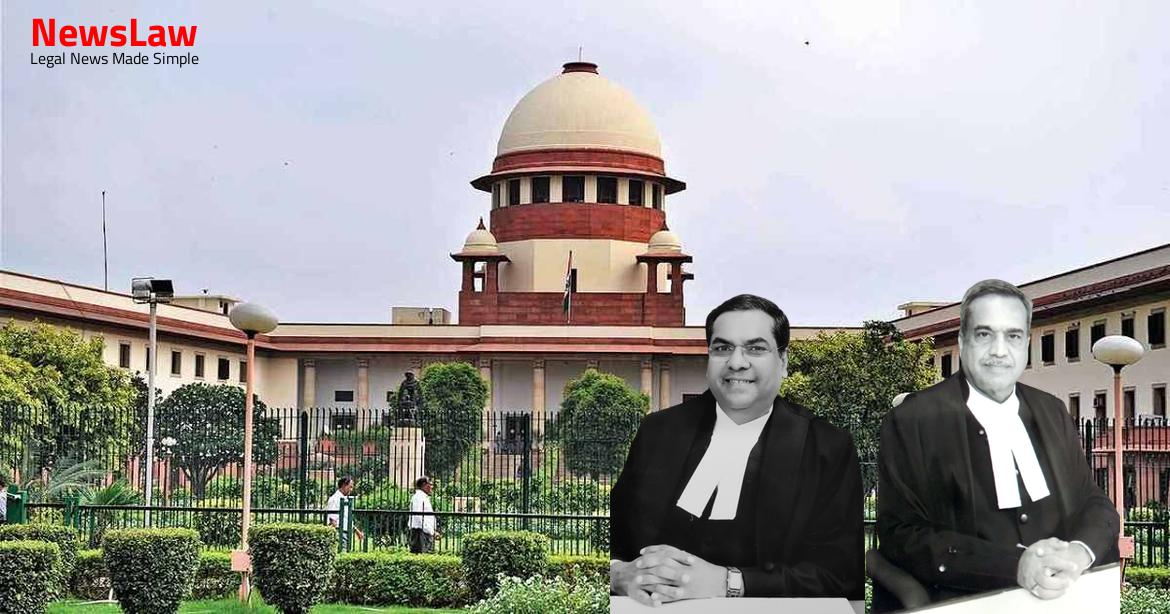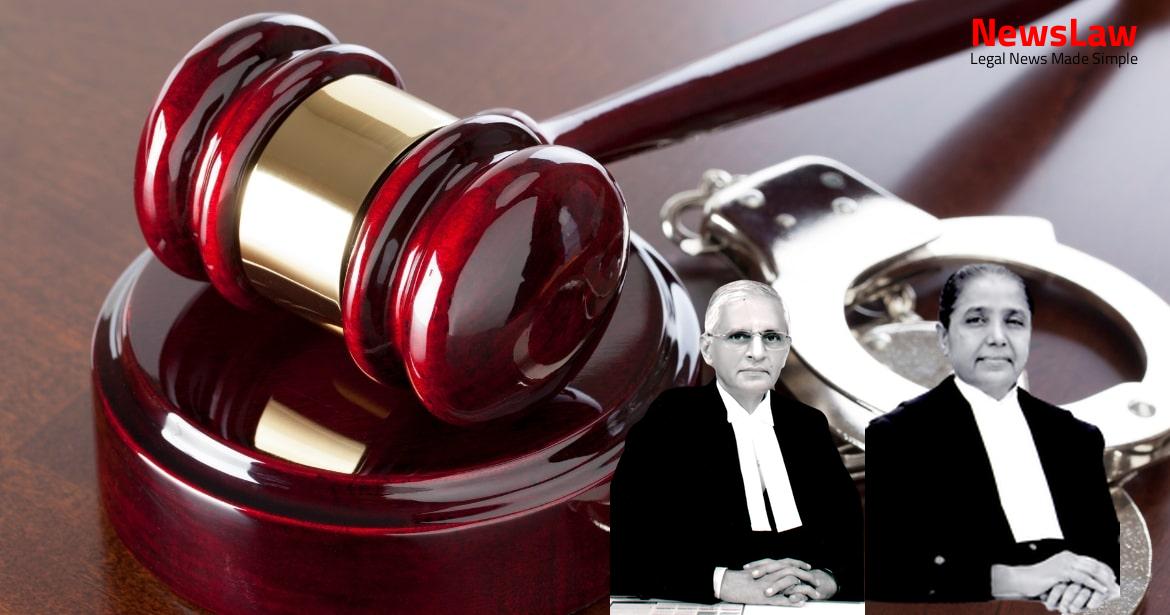Dive into the intricacies of legal analysis by courts in framing charges in criminal cases. The recent judgment sheds light on the judicial scrutiny, evidentiary evaluation, and the delicate balance between suspicion and evidence in determining the appropriate charges. Unravel the complexities of the legal system as it navigates through prosecution evidence, cross-examinations, and the accused’s defense, leading to a prudent decision by the court.
Facts
- Accused persons trespassed into the residential property of the appellant and assaulted him and his family members.
- Deceased wife of the appellant and daughter-in-law were also beaten up by the accused persons.
- The FIR was initially registered for offences under Sections 147, 354, 323, and 451 of the IPC.
- Post mortem report indicated cause of death as ‘cardio respiratory failure with no other significant injuries’.
- Medical opinions and FSL reports did not show any injuries that could have caused the death.
- Case did not fall under Section 302 IPC for murder, but charged under Section 304 IPC for culpable homicide.
- Statements of eyewitnesses and panchnamas were recorded during the investigation.
- Trial court heard prosecution and defense on the question of charge related to the incident.
- Deceased wife of the complainant succumbed to injuries suffered during the assault by the accused persons.
- Trial court discharged accused persons of murder and framed charges for culpable homicide under Section 304 of the IPC.
- High Court affirmed the trial court’s decision.
- Appellant challenged the discharge of the accused persons for murder.
- High Court’s decision was questioned in the present appeal.
- Key consideration was whether the High Court was right in affirming the discharge of the accused persons for murder.
- Trial court’s reasons included lack of evidence for murder under Section 302 IPC.
- Injury report of the deceased showed no significant injuries except slight bleeding over lips.
- Deceased’s statement indicated that accused persons attacked her husband resulting in injuries and outrage of modesty.
- Conclusion was drawn that culpable homicide not amounting to murder was applicable based on evidence and statements.
Analysis
- The Court must sift the material before it and not act as a mere post office.
- The trial court cannot reach a conclusion at the stage of framing the charge based solely on the post mortem report.
- The trial court is not supposed to hold a mini trial for the purpose of marshalling the evidence on record.
- A strong suspicion against the accused must be founded on material evidence.
- The prosecution can only lead evidence in accordance with the charge framed.
- The court is required to evaluate the material and documents on record to determine if a prima facie case against the accused has been made out.
- Whether the cause of death has a nexus with the alleged assault must be determined through oral evidence and expert witness testimony.
- Medical witnesses are of an advisory nature, and the expert witness must present all materials to assist the court in forming its own judgment.
- The prosecution should have been given an opportunity to prove all relevant facts, including the post mortem report, through the medical officer concerned.
- The trial court should not engage in a roving enquiry into the pros and cons of the matter but must exercise its judicial mind to determine if a case for trial has been made out.
- In a case triable by jury or when the Judge is ready to hear the case, the prosecutor must open the case by reading the description of the offence charged and stating the evidence he expects to prove the guilt of the accused.
- The prosecutor then proceeds to examine his witnesses.
- Section 226 of the 1973 Code outlines the procedure for opening the case for prosecution when the accused appears before the court.
- If the Judge finds grounds to presume that the accused has committed an offence not exclusively triable by the Court of Session, a charge is framed against the accused and the case is transferred to the Chief Judicial Magistrate or another Judicial Magistrate of the first class for trial.
- If the offence is exclusively triable by the Court, the Judge shall frame a charge in writing against the accused.
- Upon framing a charge, it is read and explained to the accused who is then asked to plead guilty or claim to be tried.
- At the initial stage of the trial, the truth and effect of the evidence proposed by the prosecutor are not to be meticulously judged.
- The court, while considering an application for discharge, must assume the prosecution’s material is true and evaluate it to see if it discloses the offense’s ingredients.
- The court should not conduct a mini trial but only determine if there is sufficient evidence to presume the accused’s guilt.
- Even a strong suspicion is enough to frame charges, and the court can rely on other sterling quality material apart from the prosecution’s evidence.
- The court’s final opinion should come after the prosecution evidence, cross-examination, and the accused’s opportunity to lead a defense.
- The judge can discharge the accused if there is only some suspicion but not grave suspicion against them.
- The court should not make a roving inquiry into the matter but consider the evidence and documents before it for framing charges.
- The purpose of framing a charge is to inform the accused clearly about the accusation they need to defend during the trial.
- At the stage of deciding under Section 227 or 228, the judge is not obliged to consider if the facts prove the accused’s innocence or guilt.
- Once the trial court decides to discharge an accused from a murder offence under Section 302 of the IPC, the prosecution cannot lead evidence beyond the framed charge.
- If the trial court frames a lesser charge under Section 304 Part II of the IPC, the prosecution must proceed as if establishing culpable homicide, not murder.
- Alternatively, if the charge remains as murder under Section 302 IPC, the accused can still argue for culpable homicide under Section 304 IPC at the end of the trial.
- In the present case, it is advisable to allow the prosecution to present evidence as per the original case in the chargesheet.
- The observations in this judgment are preliminary and relevant only for determining the legality of discharging accused from murder charges.
- The final decision on the nature of the offence lies with the trial court at the end of the trial, which may be a more rational and prudent approach.
Decision
- The orders of the High Court and trial court are set aside
- The trial court is directed to pass a fresh order framing charges following the observations made by the Court
- No opinion on the merits of the case has been expressed
- The appeal is allowed
Also Read: Supreme Court Judgment:
Supreme Court Upholds Benefit of Input Tax Credit in Uttar Pradesh Value Added Tax Act 2008
Case Title: GHULAM HASSAN BEIGH Vs. MOHAMMAD MAQBOOL MAGREY (2022 INSC 750)
Case Number: Crl.A. No.-001041-001041 / 2022



